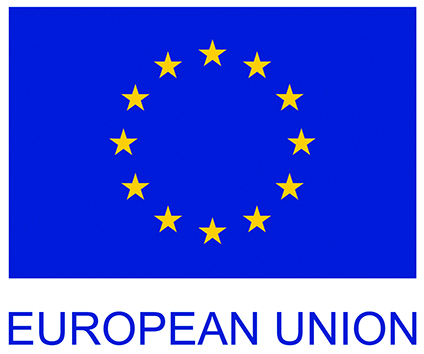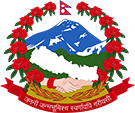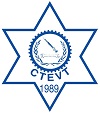Concept
1. Can we develop a single concept to work on more than one sector? If yes, how to indicate that the concept is cross sectoral?
Please see Section 4.1.3 Eligibility of activities of the Call for Grant Concept Notes which states:
"Applications must adhere to the following criteria:
- Focus on one or more of the three priority sectors (Agriculture, Tourism and Construction) or sub-sectors within these..."
To indicate cross sectoral, check mark all applicable boxes in Section 2.1 Grant Type of the Grant Concept Note template.
2. The training activities need training modules and curricula, approval of occupation standards, skill testing of graduates, etc. How do we collaborate with CTEVT on these? Do these collaborations need prior consultation and mention in the grant concept?
How can we partner with local CTEVT Centres? Some local centres are specialized, eg Pokhara is for hospitality, so how can we receive support from local CTEVT centres when the sector is different than its mandate?
Collaboration between private and public entities is a requirement of the grant. Collaboration with TVET centres is desirable and encouraged, though it is not a requirement that they act as a formal partner (co-applicant) in the submission.
To ensure equal treatment of applicants, we cannot give guidance or a prior opinion on eligibility of a proposed action or specific activities.
3. How do we demonstrate demand? Are demand tools must? Do we have to verify the demand of our proposed activities from some authorities or get it certified?
At the concept stage, we are only requesting a generic demand description (in terms of numbers and localities) to confirm that the activities being proposed are suited to the context. Shortlisted applicants will be required to attend orientation sessions in support of the development of full proposals, which will cover the use of demand analysis tools amongst other topics.
4. Will the grant project cover only for a specific component within a sector or for the various components? Does it also cover the whole life cycle (e.g. from raw materials to finished products)?
Multi-occupations within a sector are encouraged. For instance, in agriculture, all occupations involved in production, marketing, packaging and other related occupations can be considered.
5. If the technology related trainings we are planning to offer is not possible from the local expert trainers, can we make an international organization our partner?
Please refer to Section 4.1.2 of the Call for Grant Concept Notes for details on eligibility which states:
"Working in partnership and in particular multi-actor partnerships are encouraged where these prove more effective in promoting increased participation and scalability. Partnership between national and international organizations is also determined to be eligible given the Nepali organization is the prime grant recipient / lead. Clear outline and demarcation of roles and responsibilities is mandatory for the partnership grantee which has to be certified by all entities through formal written documents. The partners must also satisfy the eligibility criteria as applicable as the prime grant applicant."
6. Does the grant support strengthening of existing business? Or the development of existing workforce?
Please see Section 2.1 Overview of grants programme, which states:
"The overall objective of the Dakchyata grants programme is to improve relevance, quality and sustainability of training provision in the TVET sector by piloting innovative Public-Private Partnership (PPP) models.
The specific objectives of the grants are to:
- Improve the access to and quality of TVET service provision
- Promote linkages between labour market demand and supply
- Pilot innovative PPP models and recommend scale-up of relevant TVET provision"
Grant projects can support skills development of the current workforce, but must focus on developing and piloting new or innovative practices.
7. Is there any requirement on the percentage of disadvantaged groups in the beneficiaries?
There is no minimum or maximum percentage specified.
Partnership
8. Is a single organization eligible to apply or is partnership necessary? Can partners be from different districts?
Applicants may apply individually or with co-applicants (partners) as described in Section 4.1.2 of the Call for Grant Concept Notes. Formal grant partners must meet the same eligibility criteria as lead applicants. However, all applications must demonstrate a public-private partnership working modality.
As specified in Section 2.3, activities of applicants and partners may operate in any district in Nepal.
9. Can an organization apply as a lead in one concept and as a partner in another? Is there any limitation on the number of submissions an individual organisation could participate in - as either a lead, or partner agency?
An organization is eligible to participate in more than one concept as a partner, but can only apply once as the lead applicant.
10. Should the partnership for grant application be continued as long term partnership?
As described in Section 5.1 Concept evaluation criteria, applicants must show sustainability by outlining the potential for the project to be “reproduced/ extended to other parts of the country, or be recommended as a best practice for future replications.” Partnerships which continue beyond the life of the grant project period are preferable but this does not have to be demonstrated at this stage.
Eligibility
11. What types of organizations are eligible to apply? Are individuals eligible?
Individuals are not eligible to apply for grant. Please review Section 4.1.2 of the Call for Grant Concept Notes which pertains to eligibility of applicants.
12. If the organizational objectives don’t match with the grant objectives, is the organization eligible to apply?
Organisations must demonstrate relevant experience/capacity within the targeted sector. However, given the range of potential applicants, there are no specific criteria related to organizational objectives.
13. Is an organization not affiliated with CTEVT eligible to apply?
Only private training providers/ institutes are required to be accredited to CTEVT.
14. Is it possible to register new organization for the purpose of grant application for the project?
Section 4.1.2 of the Call for Grant Concept Notes states that to be eligible for the grants program, the applicant must be registered under the laws of the Government of Nepal and be operational for at least two years.
15. Can we design multiple grant projects with each being 3-6 months, but combined will be 2 years?
Grant projects can consist of multiple sets of activities that are coherent and logically arranged, contributing to the achievement of the overall objective. All activities must be implemented during the grant period (minimum 18 and maximum 24 months as specified at Section 2.1).
16. What are the administrative/ HR requirements to be eligible for the grant?
Where there are gaps in skills/expertise to implement the grant, the proposal must include grantees’ own capacity building interventions. Shortlisted applicants will be supported to develop this component as part of the full proposal. Please refer to Section 2.5 of the Call for Grant Concept Notes.
17. Is expenditure on overhead for organizational capacity building and infrastructure improvement allowed?
Overheads or incidentals expenditure will be capped at a maximum of 7% of the requested grant fund. This does not need to be specified at the concept note stage, but must be indicated in the detailed budget requested at full proposal stage.
18. Is there any requirement on organizational annual turnover for eligibility? Do we also have to send the audit report?
There is no threshold of organizational annual turnover for eligibility. Audit reports are not requested at the concept stage, but will be required by shortlisted applicants at full proposal stage.
Budget
19. What is the funding plan for the project?
The first call for grant concept notes is for a total of 6 million euros. Please review Section 7 of the Call for Grant Concept Notes for funding details.
20. While estimating budget, can we also hire new staff or should we be limited to our existing staff?
Staff detailed in the staffing structure required at full proposal stage may be either existing staff or hired externally for the duration of the project.
21. Will the budget be evaluated competitively against other concepts?
Grant funds requested must fall between the minimum and maximum amounts specified at Section 2.1 of the Call for Concept Notes. As budgets are constructed on the basis of actual estimated costs, this does not form part of the evaluation criteria.
22. Can we also include the cost incurred for the preparation of the grant concept and proposals?
Costs are only eligible for expenditure incurred during the grant contract period.
23. Is co-funding mandatory? Does the level of co-funding affect grant concept note evaluation?
Co-funding from applicant represents ownership of the grant activity and is therefore highly encouraged and will result in a more positive evaluation. Co-funding could be in cash or kind. In kind contributions may include staff salaries, use of office space, training premises, tools, equipment and materials, etc.
24. Should the percentage of co-funding be separated for each budget heading provided?
No, this is not required.
25. Can the co-funding be from third party organization?
The source of co-funding does not have to be from the lead applicant but must be specified on the application form.
26. How will taxation be accounted for in co-funding?
Tax is not applicable for in-kind contributions
Templates and Supportive Documents
27. Who can be the project focal person?
The focal person is the primary point of contact for the application from the lead organization.
28. What are the required documents? Are these documents required only from the lead applicant or also from the partner organization?
Please refer to Section 7 of the Call for Grant Concept Notes and the submission checklist in Annex 1 for details on required documents. These documents are required from both the lead applicant and partner organizations (co-applicants).
29. Does the supporting documents such as constitution, by laws, certificates of incorporation etc. need to be translated in English?
The supportive documents are not required to be translated in English but the concept note and self-assessment form should be submitted in English.
30. Does the application need original seal/stamp?
After the concept note template is duly filled, the applicant needs to print the concept note, sign and stamp the declaration section, and submit the scanned pdf version as per instructions laid out in Section 7 of the Call for Grant Concept Notes.






